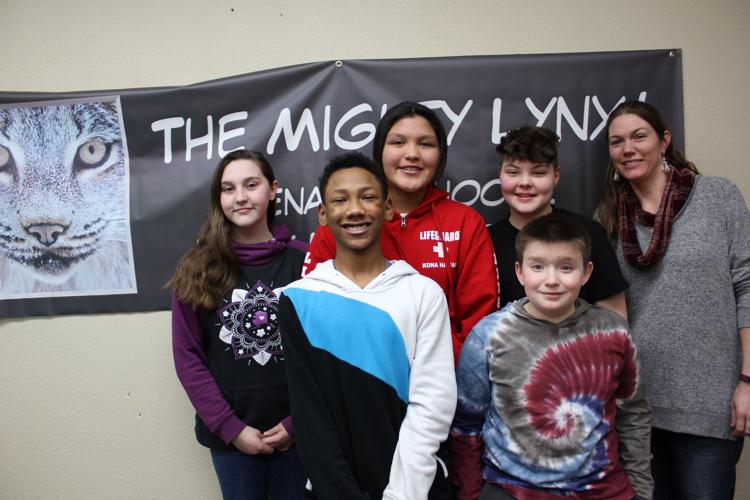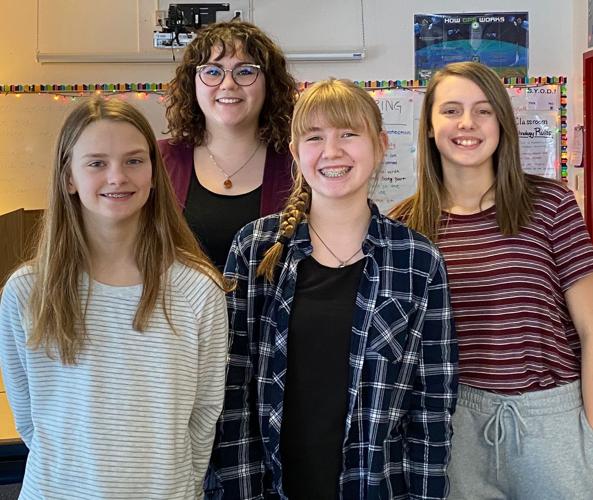Nenana City School students were named one of the nation’s 100 state finalists in the national Samsung STEM competition. Teacher Mindy Jacobse…
Interior Alaska students are looking for ways to improve their communities and maybe win some funding for their schools along the way.
Both Nenana City School and North Pole Middle School are already benefiting from their students looking into the future. Teams at both those schools are among the nation’s 100 state winners in the Samsung Solve for Tomorrow contest, chosen from among 20,000 entrants.
A handful of Nenana eighth graders are designing a patch and mobile app to help monitor student vaping and to help them quit. The North Pole sixth graders are creating a wearable device to help students with attention deficit hyperactivity disorder focus in the classroom. Both are now working on developing prototypes.
This contest, in its 10th year, challenges students in sixth through 12th grades to creatively use STEM — science, technology, engineering and math — skills to address real-world issues in their communities. Because they are among the nation’s 100 state winners, Nenana City School and North Pole Middle School will each receive $15,000 in technology to mark the achievement. Each school also receives a Samsung video kit for the next step of the project.
Both classes are slated to create and submit a three-minute video that showcases their project and how it addresses the issue they selected. That video could enable them to advance to the next phase of the contest and win additional prizes and educational opportunities.
In Nenana, a student-led survey revealed that 53% of sixth through 12th graders at the school have tried vaping at least once.
Teacher Anna Creamer with North Pole Middle School students left to right, Danika Dawley, Lucy Reese, and Raegan Kingry. This team is among th…
This team of students thinks the percentage is actually higher, because a lot of students were absent the day they conducted the survey.
A student on the team wondered if a patch, like a nicotine patch, could be linked to an app to document usage — only this patch would detect nicotine in the body, not release a substance to help people quit smoking. Maybe the patch being created by the students would change color. Users could then start tracking usage and find ways to reduce use. The patch project would include links to resources helpful to anyone wanting to quit vaping. This is a tool for students or parents could use to help their students, the class said.
In North Pole, students want to help classmates who have trouble concentrating for long periods of time, ultimately affecting their academic performance.
“They did a lot of research about the issue,” teacher Anna Creamer said. “They settled on the idea of vibration in a bracelet to help students focus.”
“The user can program it to buzz at intervals,” she added. The timing can be determined to fit each student. The idea is that stimulus will remind the students to focus when the mind starts to wander.
Students liked this idea because it is a gentle reminder that is nonconfrontational and nonverbal. And it looks nice to wear, so it’s not obvious, she added.
The three-minute videos were due Feb. 20. Twenty national finalists were to be selected for the next phase (after this edition of Alaska Pulse Monthly went to the printer), and then five grand prize national winning teams will travel to Washington, D.C., to present their projects to members of Congress. Public voting will determine a Community Choice winner from the 20 national finalists.
Contact staff writer Kris Capps at 459-7546. Email her at kcapps@AlaskaPulse.com






